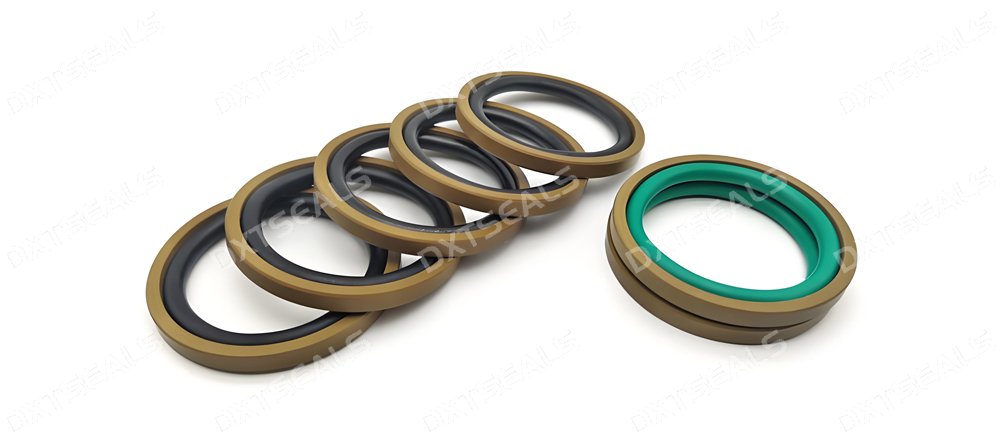
Hydraulic systems are the backbone of modern industrial equipment, providing power and precision for a wide range of applications—from construction machinery and aerospace to automotive and manufacturing. At the core of these systems lie hydraulic seals, small yet essential components that ensure performance, safety, and efficiency.
In this article, we explore the key roles hydraulic seals play, the consequences of seal failures, and provide practical troubleshooting advice to help you maintain optimal system operation.
🔍 Why Are Seals Important in Hydraulic Systems?
1. Prevent Fluid Leakage
Hydraulic systems operate under high pressure. Seals prevent the leakage of hydraulic fluid, ensuring system pressure is maintained and preventing environmental contamination.
2. Maintain System Efficiency
By preventing internal and external leakage, seals help maintain energy transfer, resulting in efficient system performance and reduced energy waste.
3. Protect Components from Contaminants
Hydraulic seals act as a barrier to prevent dust, dirt, and other contaminants from entering the system, protecting sensitive components like pistons, cylinders, and valves.
4. Enable Motion Control
Seals allow for controlled movement within the system by maintaining a precise gap between moving components. This is critical in cylinders and actuators where accurate stroke control is required.
⚠️ Common Seal Failures in Hydraulic Systems
Despite their importance, seals are vulnerable to a range of issues, especially when operating under extreme conditions. Understanding common failure modes helps in identifying and resolving problems before they escalate.
1. Seal Hardening or Cracking
-
Cause: Excessive heat or chemical incompatibility
-
Solution: Use heat-resistant materials like FKM or PTFE; ensure fluid compatibility
2. Extrusion or Nibbling
-
Cause: High pressure combined with improper groove design
-
Solution: Install anti-extrusion (backup) rings; verify groove dimensions
3. Wear and Abrasion
-
Cause: Contaminants or rough surfaces
-
Solution: Improve filtration; use wear-resistant seal materials
4. Compression Set
-
Cause: Long-term static compression without dynamic movement
-
Solution: Use seals with better recovery properties like polyurethane or FFKM
5. Installation Damage
-
Cause: Improper handling or installation tools
-
Solution: Use seal installation guides; avoid sharp edges during assembly
🛠 Troubleshooting Hydraulic Seal Failures
| Symptom | Possible Cause | Recommended Action |
|---|---|---|
| Fluid leaking at cylinder rod | Damaged rod seal or shaft | Replace seal; check shaft surface finish |
| Jerky or inconsistent motion | Air ingress or worn seal | Bleed air; inspect and replace seal |
| Loss of pressure | Internal bypass due to worn seals | Inspect piston and rod seals for wear |
| Overheating system | Friction due to incorrect seal | Use low-friction material seals |
| Fluid contamination | Failed wiper seal | Replace wiper and improve filtration |
🧩 Types of Hydraulic Seals and Their Functions
| Seal Type | Function | Material Options |
|---|---|---|
| Rod Seals | Prevent leakage on moving rods | NBR, FKM, PTFE |
| Piston Seals | Contain pressure in the cylinder | PU, PTFE |
| Wiper Seals | Exclude contaminants | NBR, PU |
| O-Rings | Static sealing | NBR, FKM, FFKM |
| Backup Rings | Prevent extrusion | Nylon, PTFE |
🌐 DXTSEALS: Your Hydraulic Sealing Partner
At DXTSEALS, we offer a wide range of high-performance hydraulic seals tailored for demanding industrial applications. Whether you're working with standard cylinders, custom actuators, or high-pressure pumps, our sealing solutions are engineered for long life and exceptional performance.
🛒 Explore Hydraulic Seal Products
📞 Contact our team for expert sealing advice!
✅ Conclusion
Hydraulic seals may be small components, but they play a big role in system reliability, safety, and efficiency. By understanding the importance of proper sealing, recognizing the early signs of failure, and using high-quality sealing solutions from trusted suppliers like DXTSEALS, you can reduce downtime, lower maintenance costs, and extend the service life of your equipment.
